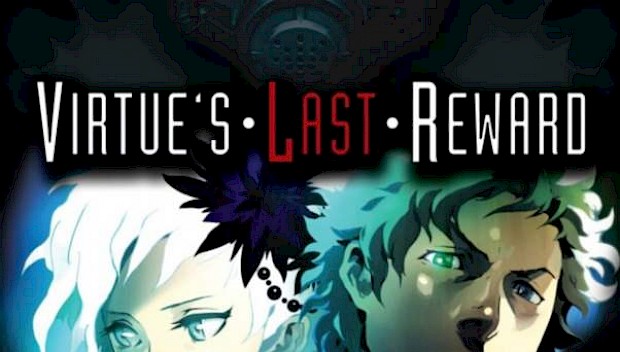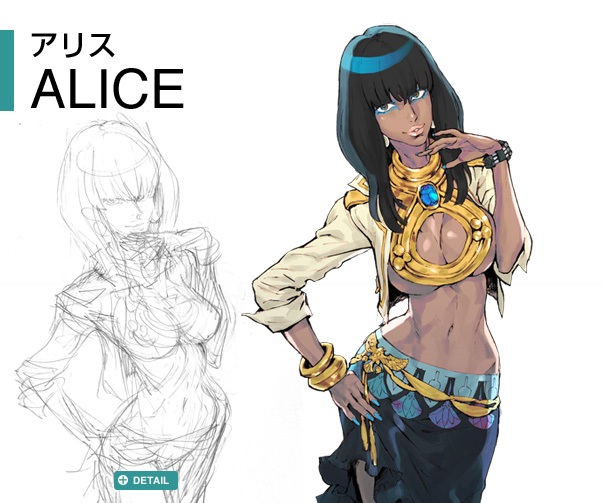Why you should play Virtue's Last Reward

Posted 22 Dec 2012 at 10:10 by Ashley Jones
Virtue's Last Reward is outstandingly fresh, gripping and challenging. It's by far the most interesting 3DS game I've played. But you shouldn't buy it; at least, not yet.
To explain why you shouldn't buy it is relatively simple, but explaining why the game is so good is more involved – and involves a small history lesson. So without further ado:
Once upon a time there was a company called Chunsoft. They produced a game in 2009 called 999: Nine Hours, Nine persons, Nine Doors for the DS, and it was incredible (see my personal review). While the Visual Novel genre was (and still is) a staple in Japan, the closest many western consumers got in the genre was the Ace Attorney series.
999 offered a suspenseful and harrowing plot; nine people find themselves trapped on a sinking ship and tasked with playing the 'Nonary Game'. The road to escape is filled with puzzle rooms, odd discussions about metaphysics, and the occasional spot of chilling gore. Even though 999 never saw a release in Europe, the title proved to be popular enough for a sequel to be made: Virtue's Last Reward.
In 2010, a separate games studio called Spike released their own Visual Novel for the PSP: Dangan Ronpa. It had a distinct, yet similar theme to 999; A murder mystery involving 15 students trapped in a high school of despair, headmastered by a psychopathic talking teddy bear, Monobear. The title was only ever released in Japan, and was an unknown in the West, until the game was covered as a 'Let's Play', translated into English by Orenronen, a member of the Something Awful message boards.
In early 2012 Spike and Chunsoft had a merger into, er, Spike Chunsoft. They had been owned by the same conglomerate as far back as 2005, but this merger seemed apt; Virtue's Last Reward takes on many thematic elements from 999 and Dangan Ronpa. It has an outstanding pedigree, and it shows.
You play as Sigma, a seemingly ordinary university student who, on December 25th of 2028, finds himself suddenly kidnapped and trapped within a giant warehouse with 8 others. The reason? To play the Nonary Game: Ambidex Edition. Escape will only be granted to those who can successfully amass 9 Points, gained by allying with fellow players... or betraying them.
As with its prequel, Virtue's Last Reward is incredibly verbose, but offsets its novel sections with 'escape the room' puzzles. However, this time everything has been kicked up a notch. There are so many possible branching paths to the plot, a function to jump between checkpoints in the game was mercifully added. Puzzle rooms have bonus challenges that give secret files. They explain the game's backstory, in a... disarmingly casual fashion. Getting these bonus rewards requires some lateral thinking, and are definitely rewarding to solve.
 The characters are also a joy to get to know. The character designs have a mixture of hits and misses (the character artist, Kinu Nishimura, often adds fanservice to her art, and some of VLR's characters get more than their fair share (as seen to the left); but all of them grow over the course of the game, some in unexpected ways. The voice acting for the European version is Japanese-only (the NA release had an optional English dub), but they all suit the characters well; especially the evil AI that hosts the Nonary Game, Zero III (his inclusion is very similar to that of Monobear in Dangan Ronpa).
The characters are also a joy to get to know. The character designs have a mixture of hits and misses (the character artist, Kinu Nishimura, often adds fanservice to her art, and some of VLR's characters get more than their fair share (as seen to the left); but all of them grow over the course of the game, some in unexpected ways. The voice acting for the European version is Japanese-only (the NA release had an optional English dub), but they all suit the characters well; especially the evil AI that hosts the Nonary Game, Zero III (his inclusion is very similar to that of Monobear in Dangan Ronpa).
The challenging puzzles and compelling plot had me playing every night; staying up until ridiculous hours finding my way out of a locked pantry and deciding whether or not to betray my team mates on this play through. But as I progressed, cracks began to appear in VLR's veneer.
At first they were silly, easily ignored things. The localisation of the text often strays from what's said in Japanese, and noticing when the two don't match up is a little jarring. During puzzles, the framerate stutters when you rotate the camera. The script insists on writing 'donno' instead of 'dunno', along with a number of silly typos in general.
And then there were the save corruption issues.
It was a problem known about in the American 3DS release. There was a bug that could corrupt your save file if you saved in the middle of certain puzzle rooms. This was annoying, but easily avoided. After the EU release, that warning was extended to all puzzle rooms. This was considerably more concerning; but still avoidable.
But then, after around 20 hours of playtime, I decided to take a break. I was nowhere near a puzzle room, so I felt I was safe. Not so. When I next boot up my game and try to load my save, I was greeted with a black screen. My 3DS had crashed. Two-thirds of the way through a great game, and my journey was over.
It brought about an odd feeling inside me. I had pre-ordered and happily laid down my £30 to play a game that would unlikely see Europe's shores. The game was engrossing and compelling enough to lose many, many hours of sleep. I would have given the European publishers, Rising Star Games, money up front if it guaranteed games like this to be consistently released over here. But at the end of the day, I had paid £30 for a game that didn't work.
I'm still not sure how to make peace with that. At time of writing, Rising Star Games have gone on record to say that they are aware of the problem; but nothing regarding what they're going to do about it. 3DS games can be patched (It happened with Mario Kart 7 not too long ago); but who knows if the same will happen here. Until some concrete action has been taken, please hold off on enjoying Virtue's Last Reward. Getting obscure releases is wonderful; but only if they actually work as intended.
Thanks to Nathan Blades for his contribution to N-Europe. You can read more of his work on his personal blog, Specs 'n' Headphones.





















